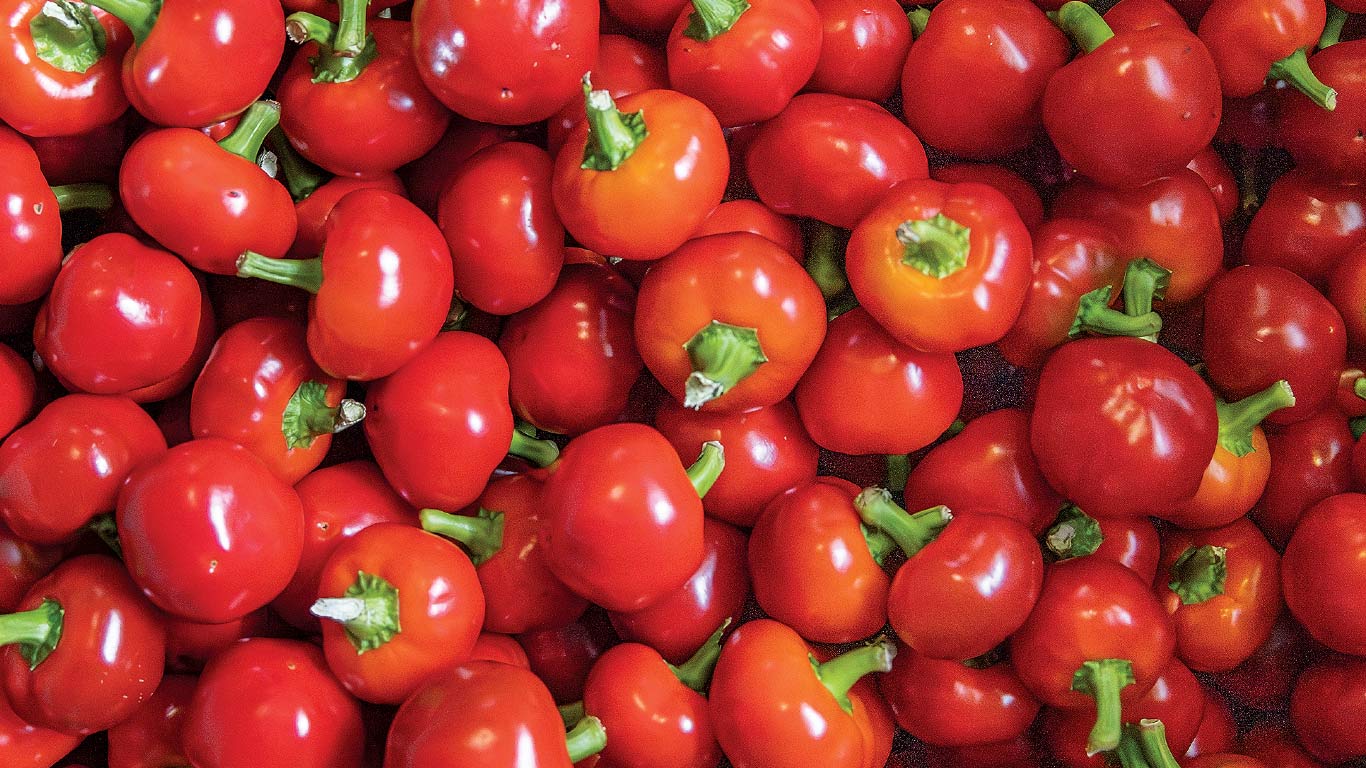Agriculture, Education September 01, 2025
Pigs Bulk up on Wheat
Research shows wheat makes great swine feed.
by Bill Spiegel
Wheat is one of the world's most consumed sources of calories for humans. But Kansas State University swine researchers find that it's a pretty darn good source of protein for pigs, too.
For the last six years, KSU's swine nutrition team has studied wheat's fit into swine rations, with updated findings. In the U.S., swine diets primarily consist of corn, soybean meal, and added trace minerals. When the price of wheat is less than that of corn, swine producers can switch from corn to wheat without seeing a difference in the swine diet's energy density, says Joel DeRouchey, swine nutrition specialist at the university.
Wheat has high levels of crude protein and amino acids compared to other grains, which means less added soybean meal is required to meet the pigs' amino acid requirements. Amino acids, including lysine, threonine and tryptophan, are considered the building blocks of protein in animals. In swine, soybean meal is considered the gold standard source for amino acids.
Moreover, wheat provides almost as much digestible and metabolizable energy as corn.
The only real negative is that wheat has about 2% lower energy value than corn.
"Ultimately, that means there are less calories per unit of wheat compared to corn, so the feed conversion will be slightly worse," DeRouchey says.
Wheat as feed? Seemingly, the math may not compute. Each year, U.S. corn farmers produce about 15.34 billion bushels of corn. Its wheat farmers grow roughly 1.97 billion bushels of that crop. Why then, would swine producers be interested in wheat?
"Obviously, wheat has more value in the human diet, but it comes back to growing conditions," DeRouchey explains.
"In some areas where swine production is located, farmers grow more wheat than corn. And if the cost of wheat relative to corn is favorable, wheat can replace all or part of the corn in swine diets without performance being affected."
DeRouchey adds that swine producers procure feed ingredients based on price and availability. In the early 2020s, prices skyrocketed for soybean meal, another main ingredient in their diets. It comes back to price.
Above: Joel DeRouchey, swine nutrition specialist, says wheat can be used at a similar rate as corn without a major decrease in the swine diet's energy density.
"One of the advantages of wheat is its higher protein, so it actually prices against soybean meal or other protein sources at the same time," he says.
It's not unheard of to use wheat as a primary cereal grain used in livestock and swine diets. In Canada, growers find wheat and barley improve carcass traits that appeal to the Japanese market. Australian farmers find wheat is less expensive than other grains in swine rations. And in Europe, wheat is more readily available for human and livestock feed than the grains used in North America, such as corn or sorghum.
Even in the U.S., wheat has been used as a swine feed ingredient for tens of decades. In a 1970s-era report called, "A Reappraisal of Wheat in Swine Rations," J.E. Oldfield, an Oregon State University animal scientist, writes: "The feeling was held, particularly during the last century, that wheat was a food for humans and not for hogs. This concept was only partly dispelled by Coburn in 1894 when he exhorted Kansas farmers that, with wheat and corn approximately the same price per bushel, it was 'neither unprofitable nor wicked' to feed the wheat to hogs."
Aaron Harris, vice president of research and operations at Kansas Wheat, a checkoff-supported organization, says the agency collaborated with KSU on the research beginning in 2014.
"It's a top priority for the Kansas Wheat Commission to identify alternative markets for wheat farmers, which give them the opportunity to capture added value," Harris says.
The challenge to swine growers is milling logistics, DeRouchey says. They will have to have storage dedicated to wheat; there must be a reliable source of the stuff, and the mill must have the ability to grind wheat.
"It takes a little more fine-tuning because the berry size is smaller. It's similar to grain sorghum, since the grain size is smaller you must have mill operators that can adjust machinery to achieve the right grind so the pigs can efficiently use it," he says. "Mills need to have the right screen sizes. And if they use a roller mill, which is very typical, it's important to get the rollers adjusted appropriately," he explains. "It's no different than if we change to milo. If we change any cereal grain in a ration, there is a little fine-tuning that happens in the mill."
As for adjusting diets, pigs don't care, DeRouchey adds.
"If wheat is economical, pigs are fine. They'll eat whatever. We just balance the feed ration and proceed," he says.
Feeding wheat to swine won't affect meat quality or taste, DeRouchey adds.
"There are no positives or negatives with wheat relative to carcass quality, leanness, fat, or anything else. There is no evidence of any difference." ‡
Read More

AGRICULTURE, SPECIALTY/NICHE
Hot Commodity
Quebec farm strives to be a one stop pepper source for chili heads.

AGRICULTURE, FARM OPERATION
Lush Life
At Fraga Farm, goat milk is the answer, from cheese to chapped hands.


